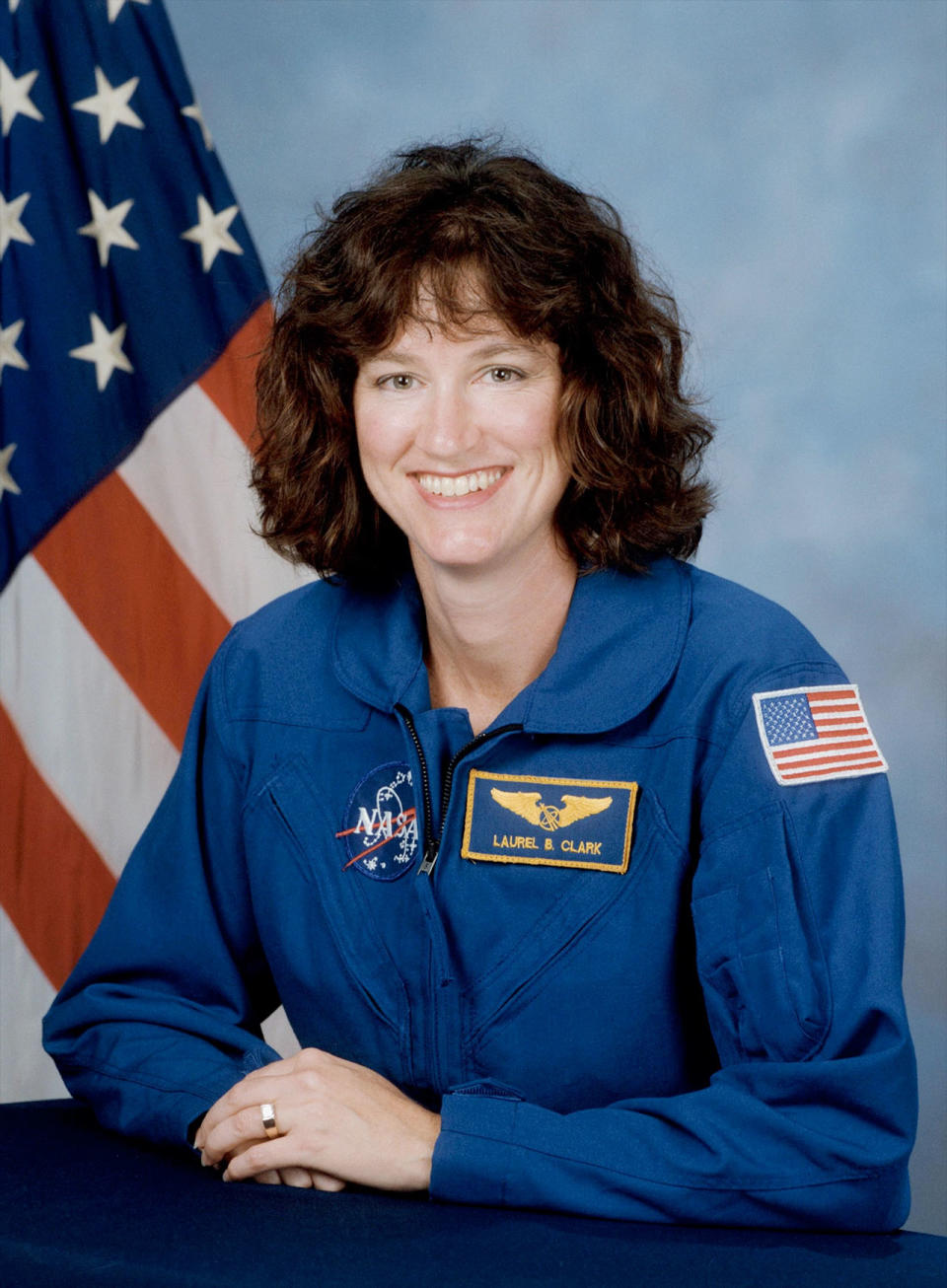Northrop Grumman names cargo craft for fallen Columbia astronaut Laurel Clark

A NASA astronaut whose first spaceflight was the ill-fated final mission of the space shuttle Columbia is being remembered with the naming of a space station-bound cargo spacecraft.
Northrop Grumman on Thursday (April 6) announced that its NG-19 Cygnus resupply vehicle will honor the late Laurel Clark, "a woman whose career took her under the sea and to the stars."
"I am honored to announce that our 19th mission will be named for Dr. Laurel Clark, a NASA astronaut, medical doctor, U.S. Navy Captain, space shuttle mission specialist and my former classmate in NASA astronaut group 16, affectionately nicknamed 'The Sardines,'" Dani Tani, who today serves as Northrop Grumman's director of business development, said in a video statement released by the company. "This year, we mark 20 years since the space shuttle Columbia tragedy when Laurel and six other crew members lost their lives."
"We are honored to name this Cygnus the 'S.S. Laurel Clark' in celebration of her enduring legacy," he said.
Related: Columbia Disaster: What happened and what NASA learned

Prior to becoming a NASA astronaut in 1996, Clark received a bachelor's degree in zoology and a medical degree from the University of Wisconsin in 1979 and 1987, respectively. While in medical school, she completed active duty training with the diving medicine department at the U.S. Navy Experimental Diving Unit and completed her postgraduate medical education in pediatrics at the National Naval Medical Center in 1988.
During her military career, Clark worked as a radiation health officer, undersea medical officer, naval submarine medical officer, diving medical officer and naval flight surgeon.
As a member of the STS-107 crew, Clark joined her fellow six astronauts aboard Columbia in working 12 hours a day in alternating shifts to successfully conduct 80 science experiments. Clark's bioscience experiments included gardening in space. She enjoyed taking photos of Earth during her free time and in an email to family said, "whenever I do get to look out, it is glorious."
On Feb. 1, 2003, Clark and her STS-107 crewmates were lost when Columbia did not survive reentry into Earth's atmosphere, the result of a debris impact during their launch. All seven astronauts were posthumously awarded the Congressional Space Medal of Honor by President George W. Bush in 2004, approximately one year after the tragedy.
Though they did not fly together, Clark and Tani did go through basic training as members of the same astronaut candidate class.
"Laurel and I trained together as mission specialists, and we bonded over our shared midwestern roots and fond connection to Scotland. I remember as a new mother herself, Laurel naturally took on a maternal role in our class, always looking out for everyone else and making sure that we were all doing well," said Tani. "Laura was caring, smart and incredibly accomplished. She was a great friend, colleague and astronaut."
"At just 41 years old at the time of her death, she had already achieved so much, and she continues to inspire future generations of explorers," he said.

For the NG-19 mission, slated to launch in May, the S.S. Laurel Clark will deliver more than 8,200 pounds (3,700 kilograms) of cargo for the Expedition 69 crew on the International Space Station. The Cygnus will be launched using the last Northrop Grumman Antares 230+ rocket as the company transitions from using Russian-built to U.S. rocket engines. The flight will depart from Pad 0A at the Mid-Atlantic Regional Spaceport (MARS) on Wallops Island in Virginia.
Once unloaded of its cargo, the S.S. Laurel Clark will be repacked with refuse and spent equipment to be disposed of during the spacecraft's planned destructive reentry into Earth's atmosphere over the Pacific Ocean. Before leaving orbit, the Cygnus will again host NASA's Spacecraft Fire Safety Experiment (SAFFIRE), which studies the way that fire behaves in microgravity.
The S.S. Laurel Clark is the fifth Cygnus to be named for a woman and the third to honor a fallen Columbia astronaut. Northrop Grumman has a tradition of naming each of its spacecraft after someone who has made significant contributions to human spaceflight.

Related stories:
— Space shuttle Columbia: NASA's first shuttle in space
— The Cygnus spacecraft: Northrop Grumman's cargo ship
— 20 years after Columbia shuttle tragedy, NASA pledges 'acute awareness' of astronaut safety
In addition to Clark's fellow crewmates Rick Husband and Kalpana Chawla, past namesakes have included former company executive J.R. Thompson, U.S. Air Force Manned Orbiting Laboratory (MOL) candidate Robert Lawrence, NASA mathematician Katherine Johnson and NASA astronauts David Low, Gordon Fullerton, Janice Voss, Deke Slayton, Alan Poindexter, John Glenn, Gene Cernan, John Young, Roger Chaffee, Alan Bean, Ellison Onizuka and Piers Sellers.
The most recent Cygnus, which was launched in November 2022 and is set to undock and be deorbited later this month, was named the S.S. Sally Ride after the first American woman to fly into space.
Follow collectSPACE.com on Facebook and on Twitter at @collectSPACE. Copyright 2023 collectSPACE.com. All rights reserved.
